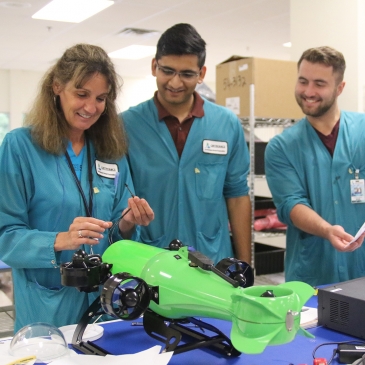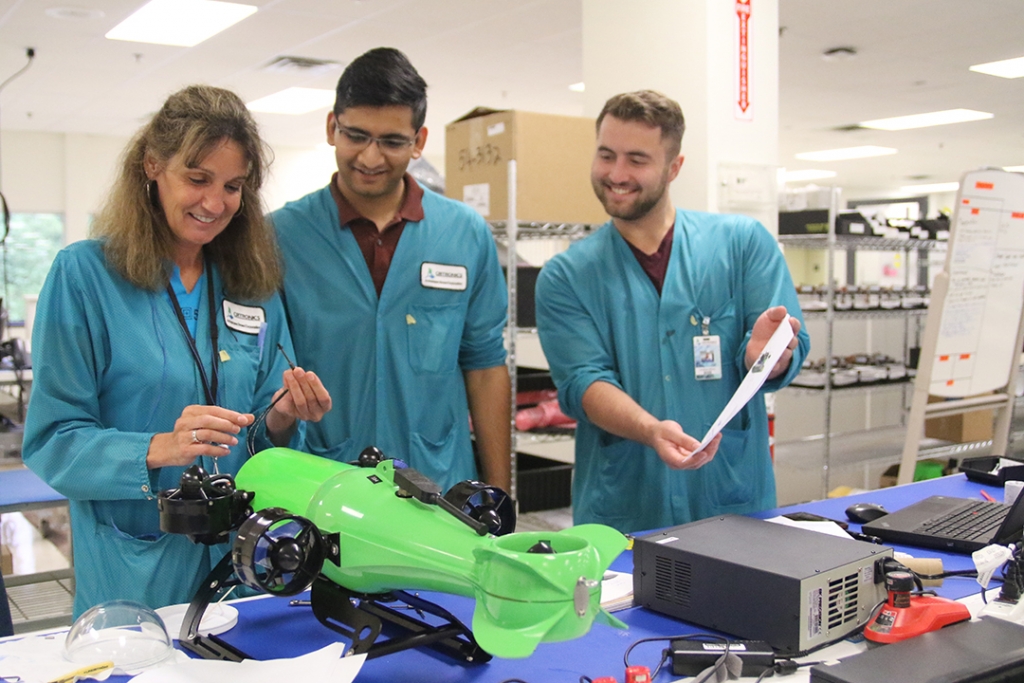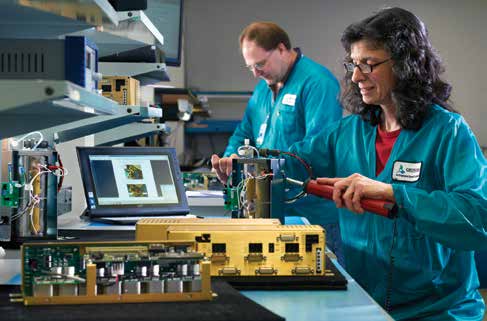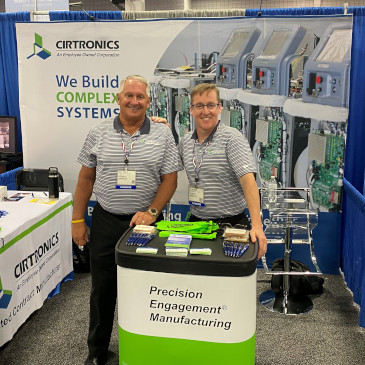
(original source)
Monday, September 10, 2018
By: Patricia E. Moody
Integrated IT helps Cirtronics tailor IT solutions to complex customer needs
Cirtronics is a leader in the New Hampshire contract manufacturing sector. As an ESOP company, Cirtronics’ employees maintain a strong and vested dedication to their customers’ success, and that on-going commitment to customers requires a variety of IT solutions tailored to complex customer needs. Cirtronics depends on their integrated manufacturing Precision Engagement® system. As a contract manufacturer, Cirtronics’ production and engineering personnel work on a variety of advanced products for tech companies like Ava Robotics (a spinoff of iRobot Company) and Brooks Automation. The company’s IT specialists must leverage the various information systems that occupy the industrial landscape to adapt to each customer’s needs. Jeff Homer, Cirtronics’ Applications Manager, heads up the firm’s IT department.
Do you code?
Homer’s journey to Cirtronics was unusual, starting with a job at his dad’s steel mill after graduating with a degree in information science technology. In the Youngstown, Ohio, Northstar Steel pipe mill he “did odd jobs—cut billets, cut pipe, cleaned the ladles. They sent me to do all the ugly jobs.” But in the mill and in other similar businesses he saw that companies were “starting to realize that they needed support people, people who had broader experience and skills and who were unique.” He saw potential developing in an industry that was just beginning to incorporate software in its daily operations.

The big change for him came when he started working in a small tin mill, Reynolds, in Greenville, Pennsylvania, where he finally got to apply his IT background—“I got put on the program for Filemaker. The boss was forward-thinking, a Wharton grad whose dad had owned the mill. I rewrote some code, and that really started it all.”
When the time came to move up to Milford, New Hampshire-based Cirtronics, Homer’s experience and understanding of both manufacturing and IT made him a great addition to the team. The company’s philosophy of Precision Engagement® means that their manufacturing and aftermarket services and communications are tailored to each customer’s specific needs.
In addressing customer needs successfully, according to Homer, flexibility is key. For example, while some companies can run to a fixed ERP/Supply Management schedule, others’ operations run with design or logistics or development challenges that require more flexibility.
How does the company’s five-person IT department successfully address these complex requirements? Exactly what do these five key IT personnel do? “We don’t have strict or rigid assignments,” Homer said. Instead, like Cirtronics’ other unique culture strategies, “it’s a very team-based and solutions-driven approach. We have hardware and software and design specialists. But we work together to solve challenges.” The big challenge for the IT department—the smooth integration of different systems communicating seamlessly with each other—is an ongoing responsibility of the IT group as systems and customer requirements evolve.”
Security
The task of the contract manufacturer may appear to be understanding customers’ engineering and designs, then building and delivering customers’ hardware on time and on budget. However, underscoring every manufacturing decision are complicated IT security issues that must be managed between customer operations and the Milford facility. Homer offers an illustration:
“Contract manufacturing customers consistently ask for their own slightly different take on security. With specific customer’s product builds, we had to find a way to bring devices onto our network, so we have internal access for manufacturing, and then we also created a secure process to allow the outside party into a limited part of the system,” Homer explained. “Other times, a customer will need to program a chip at a certain point in production, without having a software handoff to us. We work with each one of our customers to best fit their IT requirements.”
The result for Cirtronics is robust IT flexibility, lean and precise ways to customize for each customer on a well-integrated foundational system. “Our approach is based on decades of working with quality-minded customers that require exclusive and secure solutions,” Homer said.
Burn the paper!
Homer looks back at the history of building this foundation at Cirtronics. “Back in the early 2000s, we were still very paper-based with folders and clipboards. Machine programming was automated, but data collection was all on paper. We knew it was time to make some necessary changes,” he said. “The obvious place was data collection, with first some systems doing data collection online—but the manufacturing floor was last. An example of our data mining collection is Aegis X-links that feed data from the machines into our quality system. We use them for real-time information to deliver a better quality product. Administrative departments had done some home brew, but IT overall really needed to raise our game.” The company invested in Aegis for machine programming, and operations became more and more automated.

“Now,” says Homer, “a lot of what we do in IT is to respond to challenges and requests in real-time, and now we can pull between different specialists to work together at the same time. It’s a big cultural change from the old days of paper folders, and hard-copy data tracking.
“Because we need to adapt things so quickly, we have to be mindful during the transitions—we run a small phase-in, then we start to adapt. We want to be sure we start right because we are cognizant of the potential impact and we want to put the right things in place.”
Homer acknowledges that some changes can be intimidating.“Our process is inclusive and we ensure that input from the manufacturing-floor team is adopted into all change processes, including all automated systems. This kind of system allows us to be adaptive and efficient with any automated process or equipment.”
Data collection and analytics, what to do with the data once it is available, are modified to each customer’s needs as well. As Homer sees IT systems components getting closer and closer to working in real-time, there are more opportunities for real time analytics. “The quicker you address problems in real-time, the easier the problems get.”
Next steps
As a contract manufacturer with what Homer calls “quality sensitive and specialized products,” Cirtronics will continue to be challenged by its customers’ evolving IT needs. The company will address opportunity areas they’ve identified—managing incoming materials, storage and parts changes. Since automating these areas is a big capital equipment expense, Cirtronics continues to explore which strategies could increase automation of incoming and materials storage. Solutions range from an IT upgrade, redesign and more supplier involvement to a completely new automated 24/7 operation. Also, Cirtronics expects its adaptable and flexible solution to evolve over time, the hallmark of its IT strategy from the beginning.
Named a “Pioneering Woman in Manufacturing” by Fortune magazine, Patricia E. Moody is a manufacturing management consultant and author.


